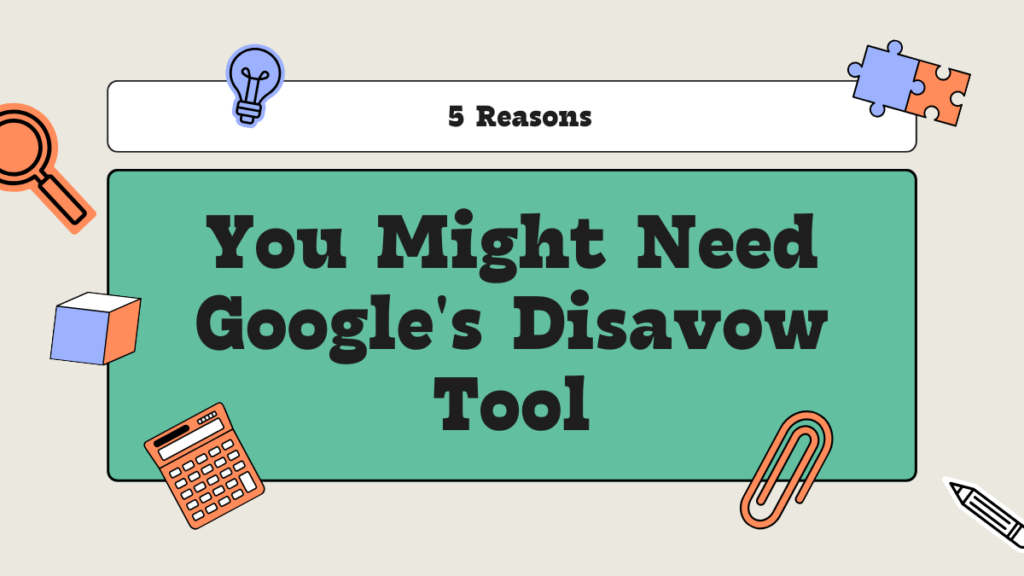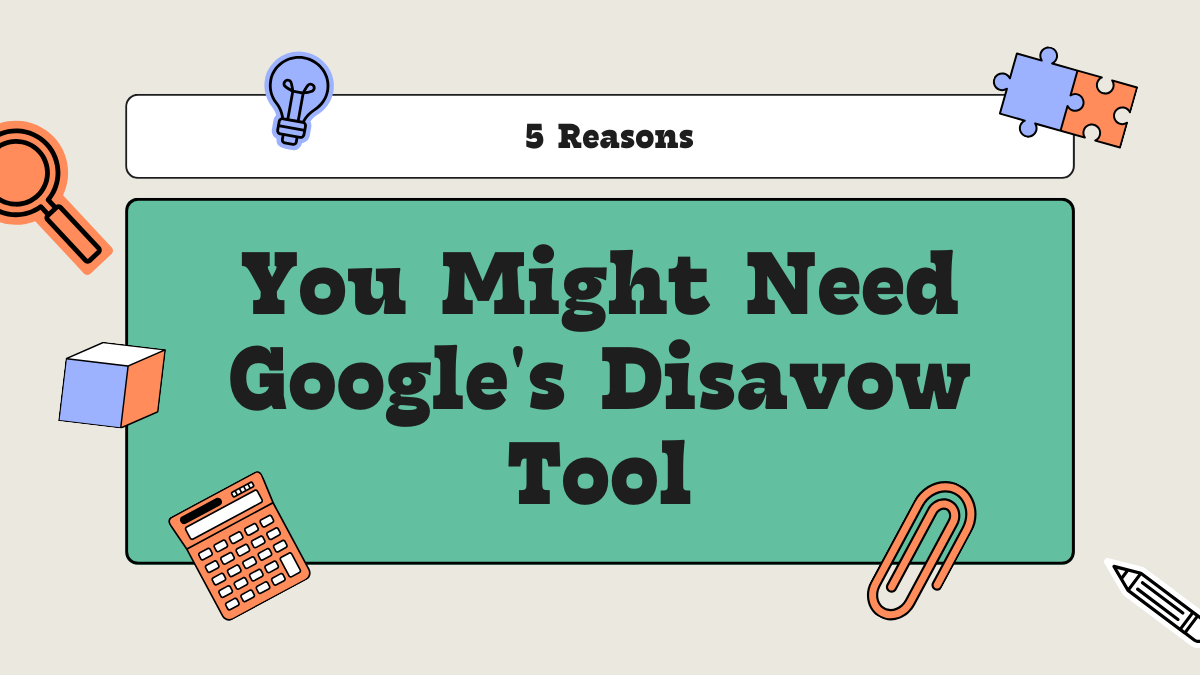Imagine this scenario: You’ve spent tons of time building a fantastic website, writing awesome content, and promoting it ethically. But something’s off – you’re not ranking as well as you should in search results. The culprit might be something that’s completely out of your control: bad backlinks.
What are “Bad” Backlinks?
Backlinks are links from other websites to yours. Search engines like Google consider them “votes of confidence.” But here’s the problem: not all backlinks are created equal. These bad backlinks can harm your website’s reputation with Google, dragging down your rankings. They come from:
- Shady websites: Sites associated with spam, gambling, or adult content
- Irrelevant Websites: Links from websites with topics very different from yours
- Link Farms: Networks of sites created solely to manipulate search rankings

Google Disavow Tool to the Rescue!
This is where the Google Disavow Tool comes in. It lets you tell Google, “Hey, I don’t want these specific links to be associated with my website.” It’s like hitting a reset button on a messy part of your website’s history.
When Should You Use the Google Disavow Tool?
Here are some scenarios where the disavow tool is your friend:
- Manual Action Penalty: You’ve received a message from Google about unnatural links pointing to your site and have already tried to get the bad links removed.
- Negative SEO Attack: You suspect that a competitor is deliberately building bad backlinks to hurt your rankings.
- Past Link-Building Mistakes: Perhaps you used questionable link-building tactics in the past and now want to clean things up.
- Preemptive Measure: If you’re worried about the potential impact of bad backlinks
- Link Profile Audit Reveals Spam: You’ve done a deep dive into your backlink profile and found a significant number of harmful links.
How to Use the Google Disavow Tool
- Conduct a Backlink Audit: Before disavowing, use tools like Ahrefs or Semrush to get a list of all backlinks pointing to your website. Identify the bad links based on the criteria mentioned before.
- Create a Disavow File: This is a simple text (.txt) file where you list the links you want to disavow. Disavowing a single URL or a whole domain is possible.
- Upload to Google Search Console: Head to the Google Disavow Tool section in Search Console and upload your file.
- Wait and Monitor: It takes time for Google to process your request. Monitor your rankings and backlink profile for changes.
Important Note!
The Disavow Tool is a powerful tool, but use it with caution. In most cases, you won’t need it at all! Disavowing good links can actually hurt your rankings. Focus on building high-quality backlinks naturally through great content and outreach first.
Dealing with bad backlinks can be frustrating. But the Google Disavow Tool gives you some control over the situation.
Summary
The Google Disavow Tool is a way to clean up your backlink profile. Use it judiciously if you’ve received a manual action penalty, have been hit by negative SEO, or want to distance yourself from past questionable link-building practices.
Have you ever had to use the Google Disavow Tool? Share your experience in the comments below!



